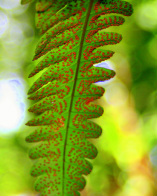

They contrast with seed plants-gymnosperms and angiosperms-in which reproduction and distribution occur by seeds. Sporebearing plants are sometimes divided into lower forms (algae, bacteria, fungi, lichens) and higher forms (ferns, horsetails, club mosses, selaginellas, isoetes, and a number of fossil plants). 10 Give 3 qualitative observations about fern spores See Fern Spores Video. In some plants spores are formed only rarely, and reproduction occurs mainly by the separation of organs, for example, in many lichens. The Non-Seed Producers: Spore Producing Plants. For example, the single spore that forms in each individual of certain bacteria serves only to survive unfavorable conditions.

Many sporebearing plants survive unfavorable environmental conditions in the spore stage. Botanical Survey of India, Howrah.A plant that reproduces and is dispersed mainly by spores, which are formed either asexually or sexually. Ferns do not look too different from flowering plants they have roots, stems, and even leaves, but the.

Ferns are plants that do not have flowers their primary reproducing form is spore formation. Bishen Singh Mahendra Pal Singh, Dehra Dun.Ģ. There are several plants with the ability to produce spores, but some of the common plants with the ability to produce spores include 1. Taxonomic Revision of Three Hundred Indian subcontinental Pteridophytes with a revised census-list (A new picture of fern-taxonomy and nomenclature in the Indian subcontinent).

LIST OF FAMILIES AND GENERA OF INDIAN PTERIDOPHYTESġ1. Due to this property, the Azolla is used as bio-fertilizer by the Agronomist in rice fields in many countries including India. show symbiotic association with nitrogen-fixing, blue-green algae, Anabaena azollae Strasburger. by the Greek philosopher Theophrastus and his Indian contemporaries Sushrut and Charak. Several species of the Pteridophytes possess medicinal properties and indeed, ferns’ medicinal qualities were recorded as early as 300 B.C. The Pteridophytes comprises over 300 genera and about 12,000 species and in India by almost 1000 species, of which 47 are endemic to India (Jenkins, 2008) and some of these species are placed under RET category. The scientific name of cryptogams is Cryptogamae, and this type of vascular plant reproduces by spore. There are two types of vascular plants: cryptogams and phanerogams. Some of the tracheophytes reproduce from seed while some reproduce from spores. This plant group forms a connecting link between non-vascular lower group plants and the higher group seed bearing plants. The vascular plants have a membrane-bound nucleus, so they are called eukaryotes. The species of the Pteridophytes grow luxuriantly in moist tropical and temperate forests and their occurrence in different eco-geographically threatened regions from sea level to the highest mountains are of much interest (Dixit, 2000). About 250 million years ago they were the dominant part of earth’s vegetation, but they were largely replaced by the seed bearing plants. They form a conspicuous element of the earth’s vegetation and are important from evolutionary point of view as they show the evolution of vascular system and reflect the emergence of seed habitat in the plants. Is fungi a spore-bearing plant yes in deed. The Pteridophytes are non-flowering, vascular and spore-bearing plants including ferns and fern-allies. What are the examples of spore bearing d examples of spore-bearing plants r: horsetail ferns mosses fungi. List of families and genera of Pteridophytes in India A spore is a single-celled asexual or sexual reproductive body that is very resistant to desiccation and heat and is capable of developing into a new organism. Pteridophytes in India(Family and Genera)


 0 kommentar(er)
0 kommentar(er)
